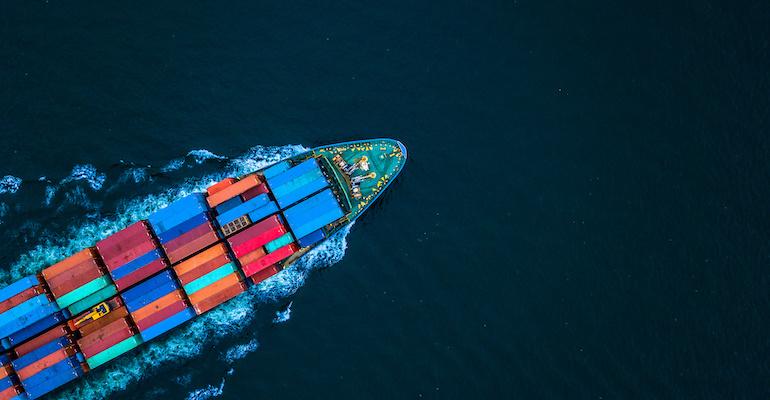The late November web presentation, part of the platform’s Logistics Rewired series, included a detailed view of supply/demand, carrier economics, and market dynamics. Anders Schulze, Flexport’s SVP, who heads up its Global Head of Ocean Freight activities, began his market overview by saying that: “This year, 2023- now coming to an end, has seen an overhang of supply,” which he contrasted with the Covid-induced demand surges.
Looking ahead, Flexport’s presentation pointed towards “The 2024 market is expected to look similar to 2023 as capacity continues to outstrip demand by 15-25%.” Schulze, looking at forecasted vessel deliveries, pointed to an estimated “addition of 13% to the fleet in 202,” which he noted is higher than historical averages.
Speaker Lars Jensen, CEO and Partner at Vespucci Maritime, parsed Schulze’s numbers slightly- commenting that “slippage” of newbuilding deliveries would bring fleet additions to around 8% to 10%, which, he said, “is not an extreme amount of capacity growth- on top of demand.” Jensen also said that he anticipated that: “Scrapping will pick up, but it’s not going to save the day.”
Against the backdrop of the capacity build, cargo interests’ inventories have normalized, and rates have moved down to pre-Covid levels. Lars Jensen, talking about the carriers, in the Pacific trades, said, “It is exceedingly likely, with no exceptions, that all the carriers will be loss making in Q4, 2023”.
The cargo side of the marketplace needs to anticipate and react to the strategies of the carriers; Schulze pointed to increased “blanking” of scheduled sailings in recent years. His colleague, Nerijus Poskus, Global Head of Ocean Procurement, said that: “Transpacific carriers are quite good at managing capacity.”
The presentation, highlighting Pacific runs, showed that carriers are blanking 15-20% of planned sailings - in some weeks 50% of planned voyages - and that slow steaming is continuing. The bottom line (based on Asia/USWC and Asia/ North Europe) is that effective capacity is around 80% of available slots. “This is why rates in the Pacific are holding up a little bit better than the rest of the world,” Poskus said.
Jensen, talking about 2023, said that the actions of the carriers have been “too little, too late” following rates that had “been dropping through the floor during the non-existent peak season.” Poskus is forecasting more inefficiencies for 2024- with longer loops in the Pacific, encompassing more ports, and the chances for impacts of delays to snowball.
Jensen brought up another set of factors that make planning more difficult; the carriers networks may be changing- “and carriers might even be changing the partners they are working with”. The presentation noted that: “The future of carrier alliances is uncertain as European Union regulations are set to change in 2024”, with exemptions allowing collaboration expiring in April, 2024.
The macro picture is full of unknowns, including the end- September expiry of longshoreman contracts along the US East Coast, the ongoing drought conditions at the Panama Canal, wars in the Middle East and Ukraine, and continued geopolitical skirmishing possible between the US and China.
What to do? Flexibility looms large, with Flexport suggesting that the cargo side needs to build resiliency into their strategies. The presenters highlighted the need to diversify contract maturity (spot, floating, and fixed), diversify their carrier choices (to minimize the impact of being on the wrong side of blanked sailings) and also to diversify service types- as the number of premium services have grown. The recommendation is for cargo shippers to: “Use transit time and price differentiated services to optimize growth and profitability.”
Resource: https://www.flexport.com/webinars/logistics-rewired-ocean-market-predictions-for-2024/
Copyright © 2024. All rights reserved. Seatrade, a trading name of Informa Markets (UK) Limited.
Add Seatrade Maritime News to your Google News feed.  |

